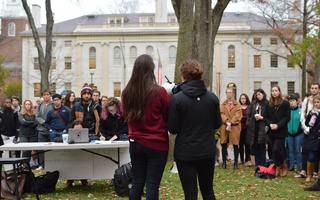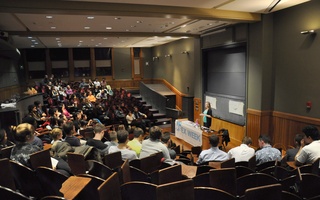“What do people even do during sex? Could they read a book to make the time go by?”
One of my classmates asked this during our sexual education unit in eighth grade. Our health teacher replied that most couples might kiss or talk. By that point in my life, I’d seen enough rom-coms (read: averted my eyes through enough PG-13 almost-sex scenes) to understand that sex could be fun for certain people. But, looking back, I can see how my classmate missed that and interpreted it as a boring activity solely for reproduction. Not once in our entire unit were we told that sex could be pleasurable or why anyone would want to have sex outside of baby-making.
The key takeaway from my middle school sexual education experience was that sex occurs when a man inserts his penis into a woman’s vagina, and that it can lead to babies. Even though this is a true statement in certain contexts, it doesn’t encompass the full diversity of genders, sexualities, bodies, and experiences. We do students a great disservice if we end the discussion there.
The incomplete and biased information I received in sexual education is reflective of a national trend. Only 24 states mandate sexual education, and of those 24, only 13 mandate that sex or HIV education be medically accurate. While 37 states require that abstinence be covered, only 20 states require education on condoms or contraception. These unsettling statistics reveal huge gaps in sexual education in many part of the United States. This harms all students, but can be especially damaging to BGLTQ students who don’t have as easy access to information about non-cisgender or non-heterosexual sex.
Even in states that do teach sexual education, curriculums centered around heterosexuality are the norm. Only 12 states require discussion of sexual orientation during sexual education. Of these 12, nine require that discussion of sexual orientation be inclusive, but three actually require that “only negative information on sexual orientation” be presented. The use of the term “sexual orientation” here is telling because all states that teach sexual education do in fact teach certain sexual orientations—heterosexuality, that is—as the default. Anything outside of heterosexuality is treated as an optional add-on rather than an integral part of the curriculum.
The stigma surrounding BGLTQ identities can also make it difficult to find accurate information that’s pertinent to BGLTQ individuals who do want to have sex. Many of the resources that cisgender heterosexual students have access to are unavailable to BGLTQ students, who are often burdened with a lack of representation in media, fear around talking about queer and trans identities with peers or parents, and a scarcity of online resources. Some BGLTQ students might not even be aware that the information relevant to them is missing. I, for one, had no idea that sex was possible between people of the same gender until high school—it just never came up before then.
Part of the problem is that the information presented in sexual education curriculums typically presents only one version of gender and sexuality as the norm. This is harmful to the BGLTQ students learning the “right” way to have sex and realizing that might not apply to them. For example, sexual education curriculums that assume that everyone needs to suppress their sexual desires until sex is “acceptable” erase individuals on the asexual spectrum who might not experience sexual desire. Moreover, the narrative that sex must occur between two people in a committed, closed relationship also reinforces monogamy and erases polyamorous people. Some classrooms teach that bodies are inherently gendered on a binary, and that there’s no difference between gender and sex: Women have vaginas and men have penises. This erases trans, non-binary, and intersex individuals who may not fit this strict binary.
HIV as well disproportionately affects members of the BGLTQ community, but only 34 states mandate HIV education in sexual education, not all of which require medical accuracy. It’s imperative that students learn factual, unbiased information about HIV and AIDS in school.
Some may argue that BGLTQ-inclusive sexual education promotes an “unnatural lifestyle” or that teens are too young to know what it means to be queer or trans. But the goal of sexual education should be to provide factual information so everyone can make informed decisions about their bodies and lives. If sexual education isn’t BGLTQ-inclusive, it has failed and harmed a part of the population that it’s supposed to be empowering.
I’ve been wondering how I would respond if an eighth grader asked me what people do during sex. What are things I wish I’d known years ago? I think I’d start with this:
“Sex can happen between any number of people with any combination of genders and sexualities. There are many ways to have sex, and it should be consensual and enjoyable for all parties involved. If that includes reading, well, that’s perfectly fine.”
Becina J. Ganther ’20, a Crimson editorial editor, is a History and Science concentrator in Leverett House. Her column appears on alternate Tuesdays.
Read more in Opinion
What Gives?
















